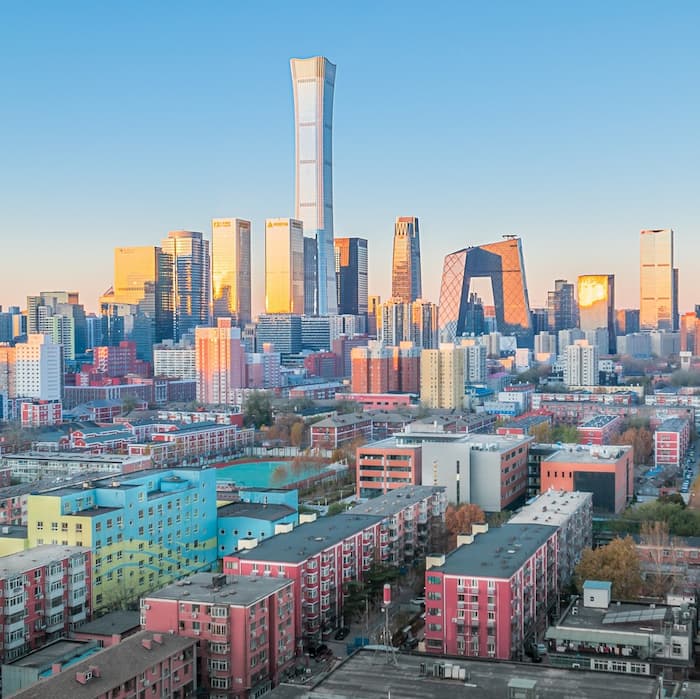Emerging Markets
China: Time For Investors To Embrace Turning Point – Ninety One

Anglo-South African asset manager Ninety One highlights why structural reform, stronger fundamentals, and sectoral innovation are transforming China and emerging markets into higher-quality, more resilient sources of long-term growth for investors.
Although emerging market equities have been outperforming developed ones since the start of the year, Chinese equities portfolio manager Wenchang Ma at Ninety One said portfolios remain heavily weighted towards developed markets and domestic resource sectors. It is time that changed, the firm says.
“As global growth drivers shift, this creates a structural gap. China’s economic transformation, and the broader evolution of emerging markets, may offer precisely the type of long-term, diversified exposure investors need,” Ma said late last week.
“For much of the past decade, China was considered the growth engine of emerging markets, only to fall short of expectations in recent years,” Ma continued. “Investors endured lacklustre equity returns, policy crackdowns and persistent geopolitical headwinds. Between August 2021 and August 2024, the MSCI China Index fell by 35.5 per cent, even as the MSCI ACWI gained 18.4 per cent.”
Now, with policy shifts, renewed shareholder focus, and economic transformation underway, Ma believes that China may be at a turning point. “September 2024’s rally lifted valuations from decade lows, with the MSCI China All Shares Index gaining about 23 per cent. Crucially, that rebound has since proved more durable, with almost 75 per cent of the subsequent 12 monthly index returns from October 2024 to September 2025, proving positive. But does this mark the start of a more durable recovery?”
Policy evolution: from reaction to strategy
China’s initial efforts to stabilise growth through monetary
easing did little to inspire confidence. By late 2024, however,
policy became more balanced. Fiscal support for local governments
and targeted interventions in the property sector signalled a
willingness to tackle underlying imbalances rather than apply
temporary fixes.
“This shift aligns with the longer-term “dual circulation” strategy, which emphasises domestic consumption and innovation alongside global trade. Realising this vision requires greater investment in healthcare, education, and social security to bolster household confidence and reduce precautionary savings,” Ma said.
Beyond the US–China lens
Investor focus often centres on Washington–Beijing relations. Yet
China’s diversification of trade partners tells a different
story. US exports account for just 14 per cent of China’s total,
down by more than a quarter over the past decade. Growing
investments in Southeast Asia and other emerging markets are
reinforcing China’s role at the heart of global value
chains.
For investors, Ma believes that China’s trajectory will be shaped less by US politics and more by domestic reform and regional integration – factors best assessed through long-term fundamental analysis.
Shareholder value and sector opportunities
China’s corporate sector is undergoing rapid change. Record share
buybacks and dividend growth signal a stronger focus on
profitability and shareholder returns. Mutlinationals such as
Alibaba and Tencent illustrate a shift towards more disciplined
capital allocation, marking a clear departure from the “growth at
all costs” era.
Long-term opportunities align with three global
megatrends
-- Decarbonisation: China now leads globally in solar, batteries,
and electric vehicles. While China still relies on fossil fuels,
it produces more than 80 per cent of all solar photovoltaic
panels, half of the world’s leading electric vehicles and a third
of its wind power.
-- Healthcare: driven by demographics and rising demand for insurance and infrastructure.
-- Technology and consumer innovation: reshaping behaviour and creating new channels for growth.
These sectors, which offer diversified exposure beyond commodities and developed-market cyclicals, are helping to build resilience and diversification.
Emerging markets
“China’s transformation reflects a broader evolution across
emerging markets. Once viewed as inherently volatile, emerging
market equities have shown remarkable resilience. Ten years ago,
emerging market equity volatility was 1.5 to 2 times that of
developed markets; today, it has converged, underpinned by
stronger fundamentals and improved policymaking,” Ma
said. Reforms in governance, fiscal discipline, and monetary
frameworks have narrowed the gap with developed markets. During
recent global shocks, from the pandemic to geopolitical
turbulence, emerging market volatility has been comparable to or
[has] even fallen below that of developed markets. This
structural shift has elevated emerging markets into a
higher-quality, more resilient asset class. For asset allocators
still underweight, the case for reassessment is compelling.
A selective, long-term approach
China and emerging markets are not without risks. Geopolitical
frictions, demographic challenges, and uneven policy execution
remain. But these are increasingly balanced by structural
reforms, stronger corporate governance, and growing sectoral
depth.
For pension plans, endowments, and other long-horizon investors, Ma believes that the opportunity lies in selective allocation. Targeted exposure to areas such as innovation, decarbonisation, and healthcare offers growth drivers less accessible in developed markets. “At the same time, adding emerging market exposure can help balance portfolios still heavily tilted towards domestic and developed-market assets,” he said. “With greater resilience and a broader opportunity set than in the past, China and its emerging market peers can now play a more meaningful role in building diversified, forward-looking portfolios.”
Ma is not alone in his views. A number of wealth managers have come out recently in favour of emerging markets and Asia this year, for instance UK-based Aberdeen Investments, Paris-based Amundi, Carmignac and Indosuez, as well as GIB Asset Management and Franklin Templeton. While China faces many structural challenges over the next five years, Aberdeen takes comfort from China’s new five-year plan to accelerate the green transition, after it wrapped up its fourth plenum meeting of the Communist Party of China. See more here and here,